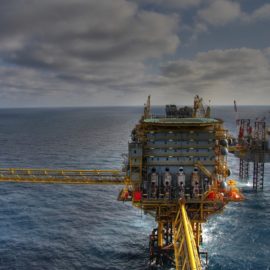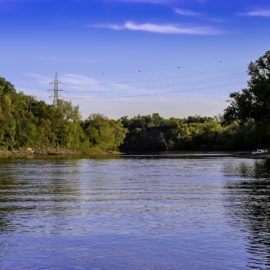
(National Fish & Wildlife Foundation
Four grants and almost $4 million given to help southeast Louisiana for coastal restoration.
Four grants totaling $8.8 million for coastal restoration projects in southeast Louisiana were among dozens nationwide announced Tuesday in New Orleans by the National Fish & Wildlife Foundation and NOAA to protect communities from flooding and intensifying storms linked to climate change. A total of 88 grants were announced for organizations in 29 states and U.S. territories amounting to more than $136 million. In Louisiana, matching money from local sponsors will increase the funding total to $9.3 million. The National Coastal Resilience Fund grants were announced on the sidelines of the national Restore America’s Estuaries Coastal and Estuarine Summit at the Hilton Riverside, where 1,300 scientists, public officials and representatives of nonprofits have gathered to discuss ways to protect coastal habitats. “While estuaries comprise just 4% of the continental landmass of the United States, they are home to 40% of Americans and generate 47% of our country’s GDP. What happens in coastal regions impacts all Americans,” RAE President and Chief Executive Officer Daniel Hayden said during the news conference. “These regions face multiple threats from sea-level-rise-induced flooding, erosion, and soil salination, to long-term droughts affecting navigation, fish and wildlife habitat, and degradation of recreational opportunities.”
nola.com
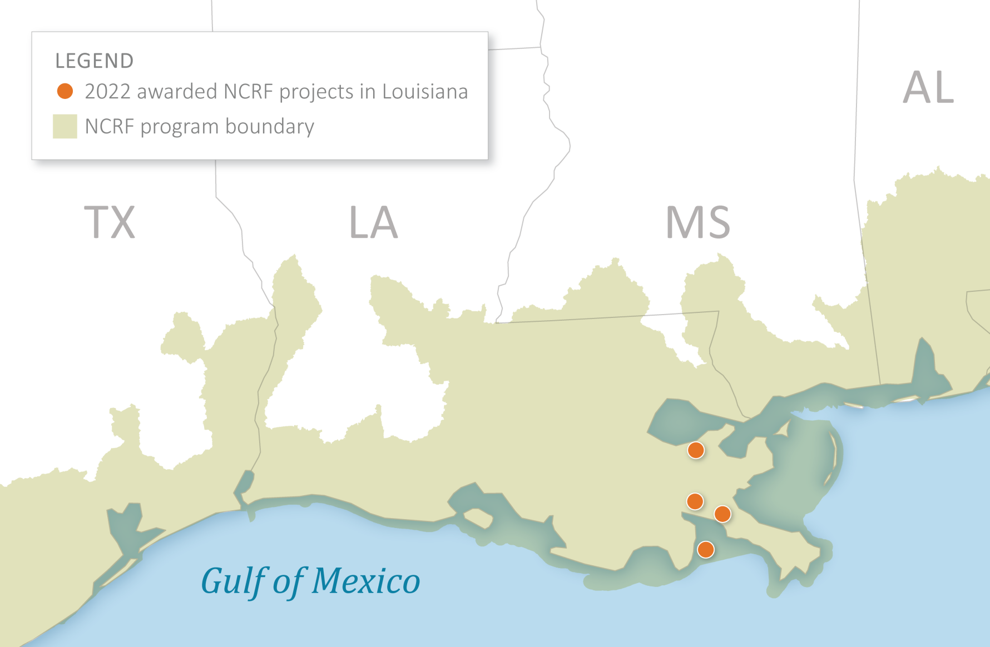
(National Fish & Wildlife Foundation)
This fund has many partners from both the government and the private sector.
The fund is a partnership between the National Fish & Wildlife Foundation, NOAA, the U.S. Department of Defense, Shell USA, TransRE and Oxy, with additional funding made available by the Bezos Earth Fund. This year, the grant program received $93.7 million from the federal bipartisan infrastructure law, with additional money from NOAA and the Defense Department. “We are embarking on a new era of conservation,” said NOAA Administrator Rick Spinrad in remarks delivered by Zoom during the news conference. “Conservation that protects and also creates new opportunities for communities on the frontlines of climate change.” Spinrad said the grants announced Tuesday don’t represent a “one-and-done” announcement, but the first of a series for similar projects in future years.
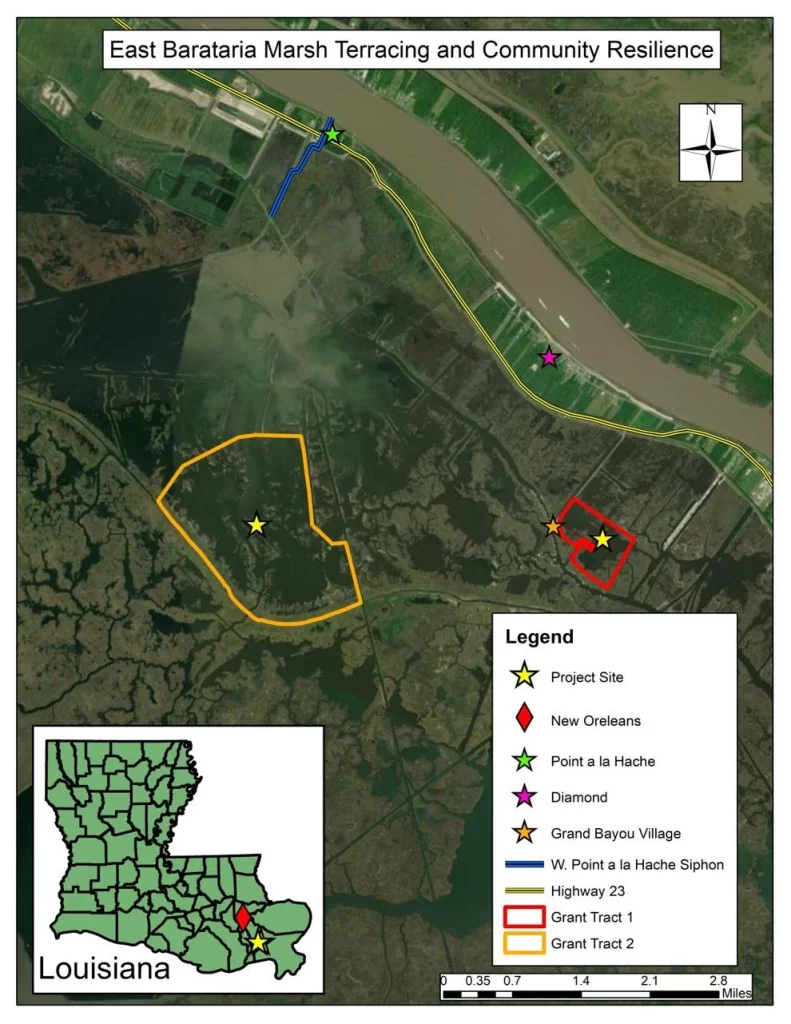
The biggest project is in the Barataria Basin with Ducks Unlimited being the recipient.
The Louisiana project getting the biggest chunk of money is a plan by Ducks Unlimited to build about 80 acres of marsh habitat in zig-zag terraces in open water in the eastern Barataria Basin in Plaquemines Parish. The new wetlands will provide protection to the nearby communities of Grand Bayou Village, which is only reachable by boat, Diamond and Pointe a la Hache. The project will receive $4.8 million from the grant, which will be matched by $300,000 from Ducks Unlimited. The emergent marsh habitat will be designed to benefit waterfowl, shorebirds and seabirds, with the terraces enhancing the growth of submerged aquatic vegetation and improved water quality, while reducing impacts of storm surge and erosion in the area. “A lot of this open water was historically solid, healthy marsh decades ago that has deteriorated and turned into open water, and has become less productive habitat,” said Cassidy Lejeune, who is overseeing the project For Ducks Unlimited. “When we build these terraces, we increase that productivity, increase the species abundance, species diversity in this area.” Jefferson Parish’s Coastal Management department will match its $2.5 million grant with $155,500 in parish funds to build similar marsh terraces in the Upper Barataria Basin. The money will be used to build 33,000 linear feet of marsh terraces, which will create 450 acres of brackish marsh.

This project has been on the Jefferson Parish wish list for years.
The project has been part of the parish’s coastal master plan for several years. It is considered part of the state/local Barataria Landbridge restoration strategy that has included construction of more than 8 miles of new wetlands with sediment dredged from the Mississippi River in an area east of the Barataria Waterway and south of The Pen failed agricultural development. The terrace platforms that will be part of this project will capture sediment, protect critical habitat from wind and wave erosion, and increase resiliency to coastal storms for communities to its north.
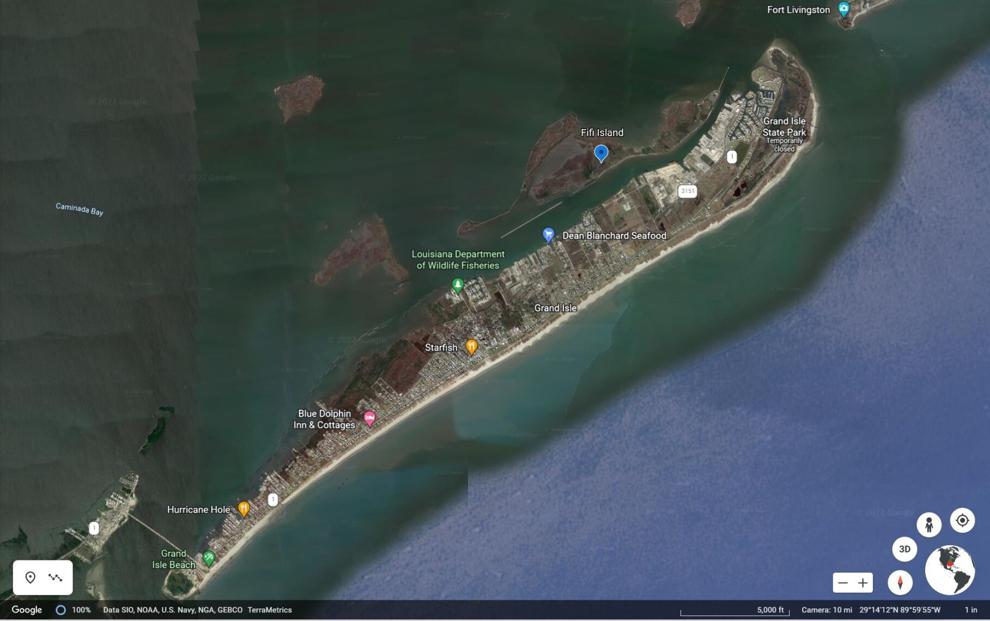
(Google Earth)
Grand Isle receives money to help build out Fifi Island.
The Grand Isle Independent Levee District will use its $614,000 grant to conduct preliminary design work on a plan to add sediment to 371 acres of marsh on the restored Fifi Island, just north of Grand Isle. The material will be protected by rock dikes already in place, the result of earlier restoration efforts. The island project will enhance habitat for fish and a variety of threatened birds, including the black rail and seaside sparrow. It also will reduce wave energy during storms that hit Grand Isle.
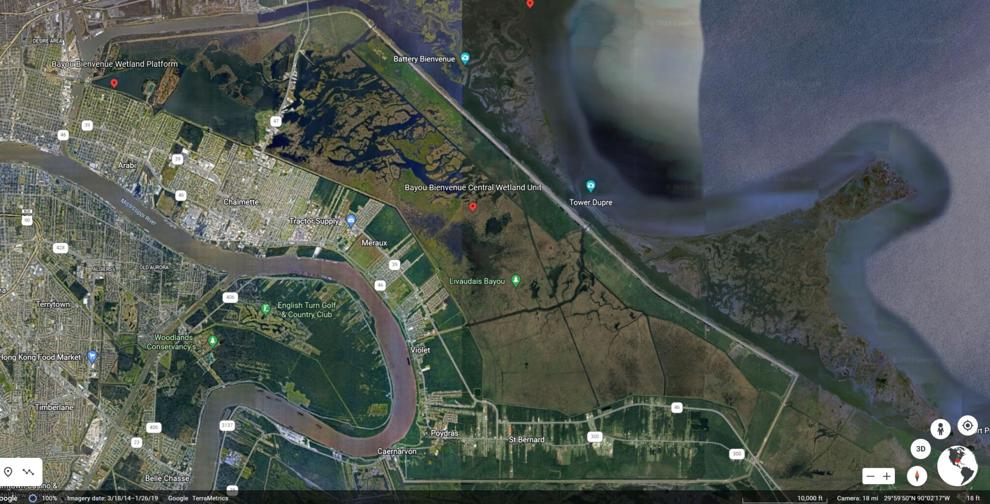
(Google Earth)
New Orleans and St Bernard Parish share an award.
The City of New Orleans will add $48,800 to its $888,800 grant that will fund preliminary design work for restoring the Bayou Bienvenue/Central Wetlands Unit, a former cypress-tupelo swamp just north of the Lower 9th Ward and Arabi in St. Bernard Parish that was mostly destroyed by high salinity resulting from the construction and operation of the Mississippi River-Gulf Outlet. The grant-funded project calls for marsh terraces, native vegetation planting, and a dredged canal to restore water flow patterns. The state has included a first phase of the unit’s restoration, largely within New Orleans, in its 2017 coastal Master Plan, at a cost of $122.3 million, but continuing fights with the Army Corps of Engineers over whether the federal government should pay for the restoration of this area and other areas where wetlands were destroyed by the MR-GO have delayed its implementation.

(Mississippi State University)
A final grant goes to Keesler AFB.
In addition to the Louisiana projects, the grant program awarded $6.5 million to Mississippi State University, with another $861,100 made available from local sponsors, to build a 2.5-mile stretch of living shoreline in Back Bay shorelines of Keesler Air Force Base, a Veterans Administration facility and Biloxi’s Hiller Park, which will include segmented breakwaters to help reduce flood and storm surge risks.
Bit by bit and project by project we improve the coast to stop erosion.

